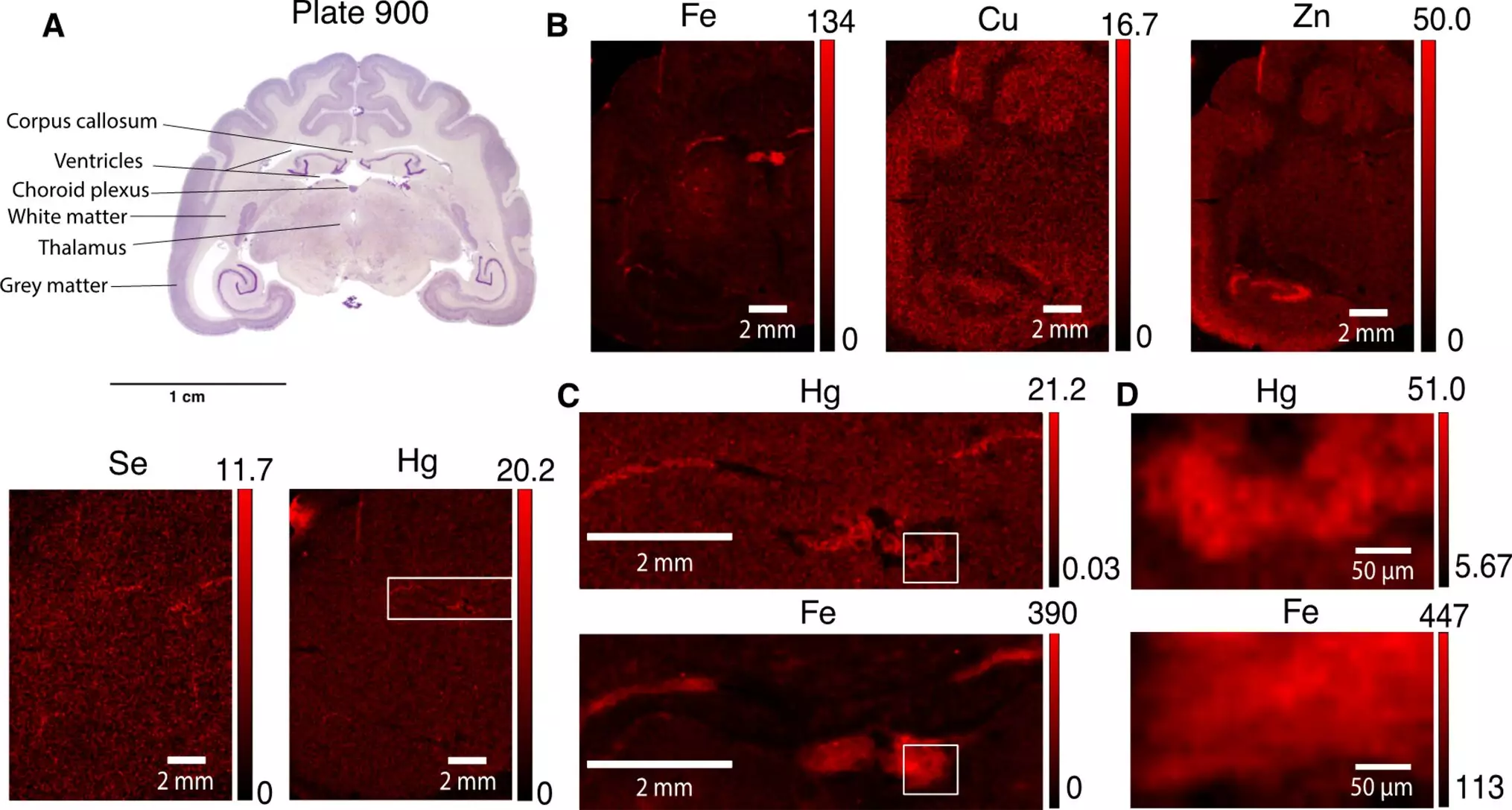Mercury, a highly neurotoxic element, has long been known for its harmful effects on the human body. From renowned physicist Michael Faraday to lab chemist Karen Wetterhahn, who tragically lost her life to dimethylmercury poisoning, the dangers of mercury exposure are painfully evident. However, while the focus has primarily been on its impact on marine life, a recent study conducted by Dr. Yulia Pushkar and her team at Purdue University’s College of Science has revealed a disturbing reality: mercury ions can make their way into the brains of terrestrial animals.
Dr. Pushkar, a professor of Physics and Astronomy, was initially skeptical of the possibility of mercury being present in the brains of land-dwelling creatures. However, her brain imaging program at Purdue University proved otherwise. Collaborating with researchers from Japan and Australia, Dr. Pushkar’s team scanned the brains of mongooses collected in Okinawa Island and discovered the presence of mercury. The scans were then refined to observe the affected brain cells at the nanoscale level.
Unanswered Questions
The mystery of how mercury enters the mongoose brain remains unsolved. Possible sources of contamination range from the water they drink to the bird eggs they consume, or even the air they breathe. What is certain, however, is the dire consequences. Mercury can bind to essential biomolecules and disrupt their function, leading to severe health issues. Detoxification of the affected brain cells depends on the uptake and binding constant inside detected accumulations, as well as the potential leakage if brain cells die. Unfortunately, there is no known method to safely dissolve these aggregates from tissue, and reversing the effects of mercury poisoning on the neural system remains elusive.
Dr. Pushkar’s skepticism was shattered when intense X-ray exposure at the Advanced Photon Source at Argonne National Laboratory revealed the presence of mercury in the mongoose brains. Tracing the higher mercury content, the research team identified specific brain cells with mercury-rich puncta. These cells, known as choroid plexus cells and astrocytes of the subventricular zone, appear to play a crucial role in filtering mercury from the blood and brain tissue. The team believes that these cells store mercury with the help of another element: Selenium. While the exact biological molecules containing selenium that bind mercury are yet to be discovered, this finding opens up new avenues for understanding mercury distribution in brain cells.
A Call for Environmental Monitoring
The implications of this discovery extend beyond the mongoose population of Okinawa Island. A staggering 2,000 metric tons of mercury compounds are emitted annually through human activities. Yet, the fate of this neurotoxic substance remains largely unknown. While studies have primarily focused on its impact on marine life, the presence of mercury in terrestrial species cannot be ignored. Dr. Pushkar’s research provides valuable insights into the interaction between mercury and cells of the choroid plexus and astrocytes, possibly shedding light on how mercury affects the human brain.
Raising Awareness for Safeguarding Human Health
With mercury lurking in unexpected places, it is imperative to raise awareness about the dangers it poses and promote effective measures for prevention. Chronic exposure, as seen in Faraday’s case, can have debilitating effects on health, making it crucial to minimize any potential exposures. Efforts to reduce mercury emissions and develop innovative methods for safe removal from tissues are of paramount importance. By understanding the complex interactions between mercury and brain cells, scientists hope to find ways to mitigate the harmful effects and safeguard human health.
The revelation that mercury can infiltrate the brains of terrestrial animals raises significant concerns about its impact on human health and safety. With the emission of mercury compounds continuing unabated, it is crucial to prioritize environmental monitoring and research to gain a comprehensive understanding of its distribution and effects. Only through concerted efforts can we hope to protect both the animal kingdom and ourselves from the silent invader that is mercury.


Leave a Reply